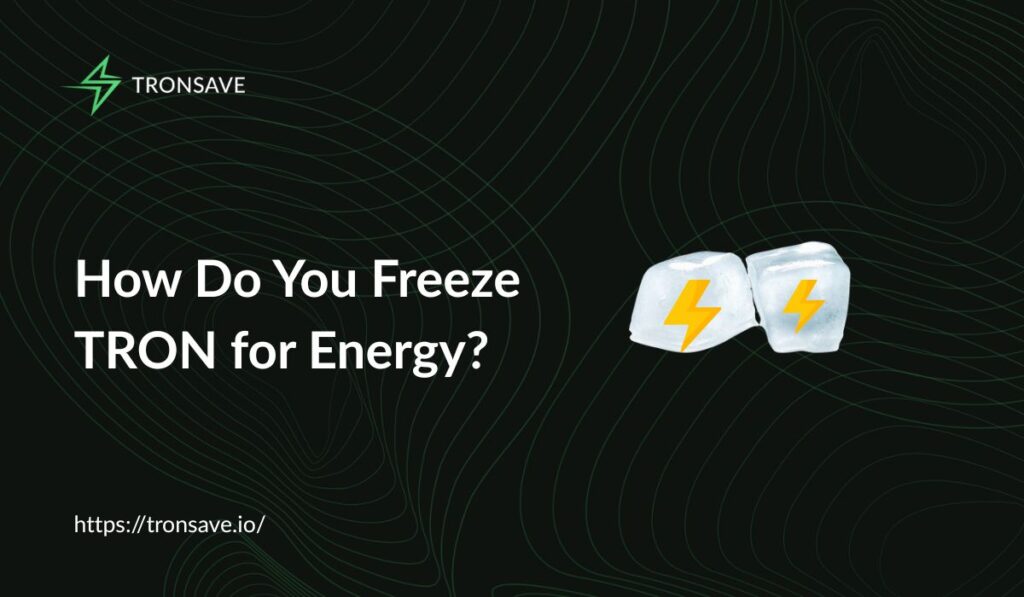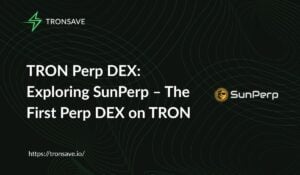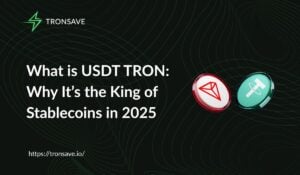
Why freeze TRON for energy?
Freezing TRON (TRX) for energy is like prepaying for gas to keep your car running smoothly—it saves you from burning TRX every time you make a transaction. By locking TRX, you gain energy to power smart contracts, like USDT transfers or DeFi dApp interactions, without hefty fees. Plus, you can earn up to 7.2% APR through voting rewards. This guide breaks down the process with practical tips to help you navigate the TRON blockchain like a pro, whether you’re a newbie or a seasoned crypto user.
The TRON blockchain relies on two key resources: bandwidth and energy. Bandwidth covers basic transfers, while energy fuels complex smart contract operations. Freezing TRX allocates energy based on your stake, but if you’re looking for a quick alternative, platforms like TronSave offer energy rentals to slash costs without locking funds. Let’s dive into how freezing works and how to make it work for you.
Understanding TRON energy and its importance
Energy is the backbone of TRON’s smart contract ecosystem, powering everything from TRC20 token transfers to DeFi platforms. While every TRON account gets 600 free bandwidth units daily, energy isn’t free—you either freeze TRX or burn it to cover costs. Freezing saves TRX in the long run, especially for frequent users, and unlocks additional perks like voting rights on the network.
What is TRON energy?
Energy drives the computational needs of smart contracts, like sending USDT (a TRC20 token) or staking in JustLend. Freezing TRX allocates energy proportional to your stake compared to the network’s total frozen TRX. For instance, freezing 11,000 TRX might yield 64,285 energy units, enough for a standard USDT transfer. Without energy, your wallet burns TRX—costly if you’re active daily.
Why freeze instead of burn TRX?
Burning TRX is like paying cash for every transaction—it adds up fast. A single USDT transfer can cost 13.61 TRX, while freezing TRON for energy covers these costs for free. Freezing also grants TRON Power, letting you vote for Super Representatives and earn rewards. It’s a win-win for those looking to save and earn on TRON.
When does energy matter most?
Energy is crucial for frequent TRC20 users or dApp enthusiasts. For example, if you’re trading NFTs on TRON or staking in DeFi protocols, you’ll burn through energy quickly. Freezing TRX ensures you’re covered for daily transactions, making it ideal for active blockchain users who want to avoid surprise fees.
Step-by-step guide to freeze TRX for energy
Freezing TRX for energy is straightforward with wallets like TronLink or Trust Wallet. Follow these steps to lock your TRX and power your transactions efficiently.
Step 1: Set up your TRON wallet
Open a TRON-compatible wallet like TronLink, Trust Wallet, or Klever on mobile or desktop. Navigate to the TRX section and check your balance—ensure you have at least 1 TRX, the minimum for freezing. If you’re starting fresh, transfer TRX from an exchange like Binance to fund your wallet.
Step 2: Access the freeze feature
Find the “Freeze” or “Stake” option in your wallet, typically under the TRX portfolio or resource management tab. Select “Energy” (not bandwidth) and input the TRX amount. Freezing 11,000 TRX is a solid choice for daily USDT transfers or dApp use, as it covers most energy needs.
Step 3: Confirm the transaction
Review the details: TRX amount, resource type (energy), and lockup terms. Sign the transaction with your wallet’s PIN or private key. Once confirmed, your TRX is frozen, and energy is credited within seconds. Check TronScan to verify your energy balance—I always screenshot the confirmation for peace of mind after a wallet glitch cost me a few hours of troubleshooting.
Step 4: Monitor and manage resources
Track your energy on TronScan or your wallet’s resource page. Energy recharges over 24 hours after use, but if you run low, you’ll burn TRX for fees. To estimate energy needs, use the TRON Resource Calculator. If you need energy without freezing, platforms like TronSave can help, but we’ll cover alternatives later.
| Step | Action | Notes |
| Set Up Wallet | Open TronLink or Trust Wallet | Minimum 1 TRX balance |
| Freeze TRX | Select “Energy,” enter amount | Aim for 11,000 TRX for daily use |
| Confirm | Sign with PIN/private key | Verify resource type (energy) |
| Monitor | Check energy on TronScan | Use TRON Resource Calculator |
Benefits of freezing TRX for energy
Freezing TRON for energy offers a triple win: lower fees, passive income, and network influence. Here’s why it’s a must for TRON users.
Save big on transaction fees
Freezing TRX provides energy for TRC20 transfers and dApp interactions, saving you from burning 13.61 TRX per USDT transfer. For example, I once sent 10 USDT transfers daily and would’ve burned 136 TRX weekly without freezing. With 11,000 TRX frozen, those transfers cost nothing in fees.
Earn TRON Power and rewards
Freezing TRX grants TRON Power, letting you vote for Super Representatives (SRs) and earn up to 7.2% APR. Voting is like picking a winning team—you support SRs who generate blocks and share profits. Last month, I earned 40 TRX in rewards by voting for a top SR after freezing 15,000 TRX.
Flexible staking with Stake 2.0
Stake 2.0, introduced by the TRON Foundation, makes freezing more user-friendly. Unlike Stake 1.0’s rigid 3-day lockup, you can partially unstake or delegate resources without canceling votes. This flexibility lets you adjust your strategy without losing rewards, perfect for dynamic DeFi users.
Alternatives to freezing TRX
Don’t want to lock your TRX for 14 days? There are other ways to get energy without burning a hole in your wallet. From renting energy to leveraging free daily resources, here’s how to stay efficient.
Rent energy for instant access
Energy rental platforms let you access energy without freezing TRX. For example, you can rent 64,285 energy units (enough for a USDT transfer) for as low as 5.24 TRX, compared to burning 13.61 TRX. This is ideal for one-off transactions or testing new dApps without committing funds long-term.
Use free daily bandwidth
Every TRON account gets 600 free bandwidth units daily, which can cover basic TRX transfers. However, TRC20 transactions require both bandwidth and energy. If you’re only sending TRX occasionally, lean on free bandwidth to minimize costs while saving energy for smart contracts.
Burn TRX strategically
If you’re low on energy and don’t want to freeze, burning TRX is a last resort. Use the TRON Resource Calculator to check how much TRX you’ll burn (e.g., 13.61 TRX for a USDT transfer). This works for rare transactions but gets pricey for frequent users.
Common mistakes to avoid when freezing TRX
Freezing TRX is simple, but small errors can trip you up. Here’s how to avoid pitfalls I’ve learned the hard way.
Freezing too little TRX
Freezing less than 11,000 TRX often leaves you short for frequent USDT transfers or dApp use, which need 64,285 energy units per transaction. I once froze only 5,000 TRX and ran out of energy mid-week, forcing me to burn 40 TRX. Aim for 11,000+ TRX or use the TRON Resource Calculator to plan.
Choosing the wrong resource type
TRX can be frozen for bandwidth or energy, but only one per transaction. I made the mistake of freezing for bandwidth when I needed energy for a smart contract—wasted 5,000 TRX! Always double-check you’ve selected “Energy” for TRC20 or dApps.
Forgetting the 14-day unfreeze period
Stake 2.0 lets you unfreeze anytime, but TRX takes 14 days to become available. I got stuck once needing funds for an urgent trade. Plan your freezing around your liquidity needs to avoid surprises.
FAQs about freezing TRON for energy
1. How much TRX should I freeze for energy?
Freeze at least 11,000 TRX to cover daily TRC20 transfers or dApp interactions (e.g., 64,285 energy units per USDT transfer). Use the TRON Resource Calculator to estimate your needs based on transaction frequency.
2. Can I freeze TRX for both bandwidth and energy?
Yes, but each freeze is separate. You can freeze multiple times, stacking resources. For example, freeze 10,000 TRX for energy and 5,000 for bandwidth to cover all bases.
3. What happens if I lack energy for a transaction?
Without energy, your wallet burns TRX (e.g., 13.61 TRX per USDT transfer). Freezing TRX prevents this, or you can rent energy for a fraction of the cost.
4. How long does unfreezing TRX take?
Stake 2.0 allows instant unfreezing, but TRX is available after 14 days. Plan ahead to avoid locking funds you need soon.
5. Do I earn rewards by freezing TRX?
Freezing grants TRON Power for voting, with rewards up to 7.2% APR depending on the Super Representative. Choose SRs with high reward ratios for better returns.
6. Can I use frozen TRX for transactions?
No, frozen TRX is locked and can’t be used until unfrozen (14 days). Keep extra TRX in your wallet for immediate transactions.
7. How does Stake 2.0 differ from Stake 1.0?
Stake 2.0 allows partial unstaking and delegation without canceling votes, unlike Stake 1.0’s 3-day lockup. It’s more flexible for managing resources.
Conclusion
Freezing TRON for energy is a smart move to cut transaction fees, earn up to 7.2% APR, and power your TRC20 transfers or dApp interactions. With this guide, you can freeze TRX confidently, avoid common mistakes, and optimize your TRON experience. Need a faster way to save on fees without locking funds? Check out TronSave to rent energy for as low as 5.24 TRX and save up to 83% on transactions. Start today and make your TRON wallet work smarter!



